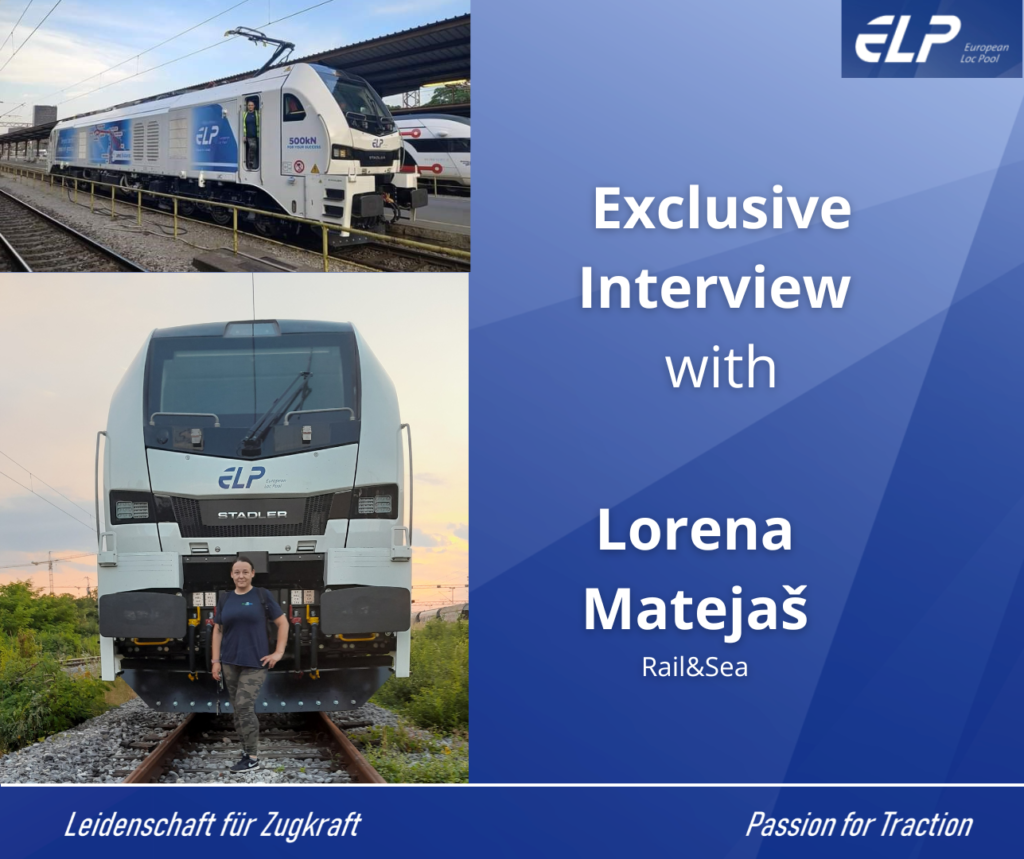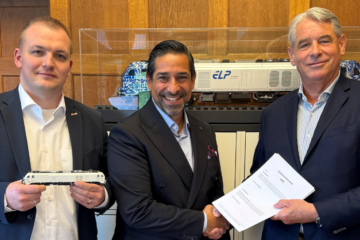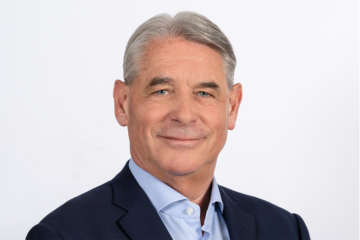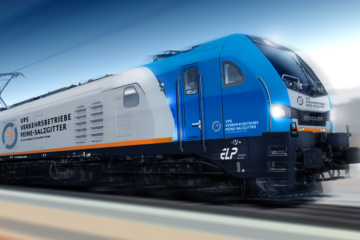
Lorena, you have been one of the first locomotive drivers to drive the EuroDual in the Balkans. How did you get the opportunity to be a EuroDual driver on test drives in the Balkans?
Since Rail&Sea has a strong partnership with ELP, we were given the exciting task of introducing the EuroDual to the railways of Eastern Europe. Being chosen for this role felt like a great honor. It was an opportunity to expand my skills as a locomotive driver with a “new system”, the EuroDual Locomotive, which is called “Leteći Balkanac”(The Flying Balkanman) in honor of this region.
Our training took us to Valencia, the main Stadler locomotive factory. There, we got a firsthand look at the birthplace of these locomotives, giving us the opportunity observe the locomotive’s power, versatility, and adaptability to different rail systems—arguments that are crucial for the varied conditions across Slovenia, Croatia, and Serbia. We were able to grasp the logic behind the design, honed through years of development.
The team from Stadler gave their best to get all our questions answered and explained. I consider it especially exciting that we were given the opportunity to test how the powerful EuroDual behaves on the track in the factory itself and what every train driver especially likes, when you feel in your hands the power that is available. Already over there, the EuroDual surprised me with its power, possibilities and ease of preparation and driving.
What were your initial impressions of the EuroDual locomotive, and how was your experience during the test drives in Slovenia, Croatia and Serbia?
Shortly after our training in Valencia and Berlin, where we, alongside our colleagues from Slovenia, were certified to operate the EuroDual, the locomotive made its way to Slovenia and Croatia. Are you familiar with the smell of a new car? That fantastic feeling greeted me when I first stepped into the driver’s cabin. The locomotive with its 6-axles and imposing size and weight of 23 meters and 123t, represents a real little giant. Testing the locomotive in Slovenia, Croatia and Serbia offers us the possibility of operating the locomotive under various conditions and using all available traction systems; 15kV in Jesenice, Diesel-mode in Slovenia, 25 kV in Croatia and Serbia.
Starting the diesel engine for traction itself is extremely simplified and suitable in all conditions when the need arises. This is very practical in Croatia where not all railways are electrified. The diesel engine avoids wasting precious time on changing locomotives. I must admit that I enjoyed discovering the power and driving options. The team that participated in the testing proved to be very professional. They managed most of the duties and expanded the circle of EuroDual fans to a wider area. I don’t even have to tell you what it’s like to gather locomotive lovers and leave them to enjoy and explore. The feeling is simply fantastic.
Do you see the potential for the use of 6-axle locomotives in the territory of Southeast Europe?
With its 6.2 MW power and the possibility of choosing 3 different traction systems, I consider the EuroDual locomotive a smart solution for transport on railway networks that are not unified in terms of power supply. This fact has proven to be a potential problem in the Balkan countries. The use of such locomotives avoids changing locomotives and changing personnel.
In a wider area the EuroDual proved to be a locomotive with excellent performance. The locomotive with 3 individually powered driving axles per bogie, which are very adaptable to the rails, offers an incredible starting tractive effort of 500 kN, which is very impressive for locomotives for transporting heavy freight trains. The locomotive is very stable, and the wheels do not tend to slide. The diesel engine offers a power of 2.8 MW, and the electric power supply of the locomotive gives a potential power of 6.2 MW. I sincerely hope for more EuroDual locomotives to be provided by ELP in the Balkans as soon as possible!
Many thanks to Lorena and Rail&Sea!
We wish you a safe and pleasant journey at all times and hope to change the Rail Freight Industry in the future together.


